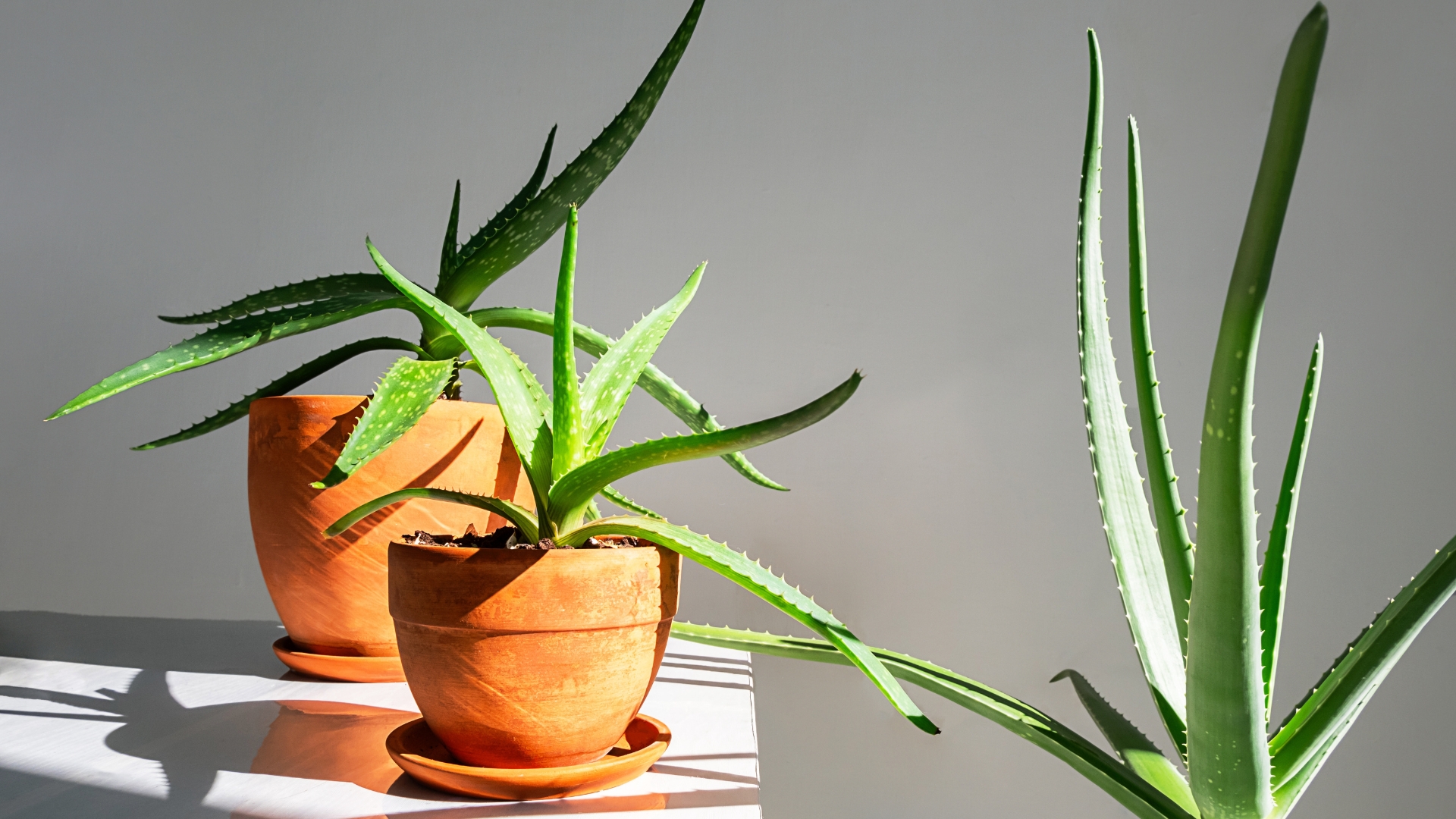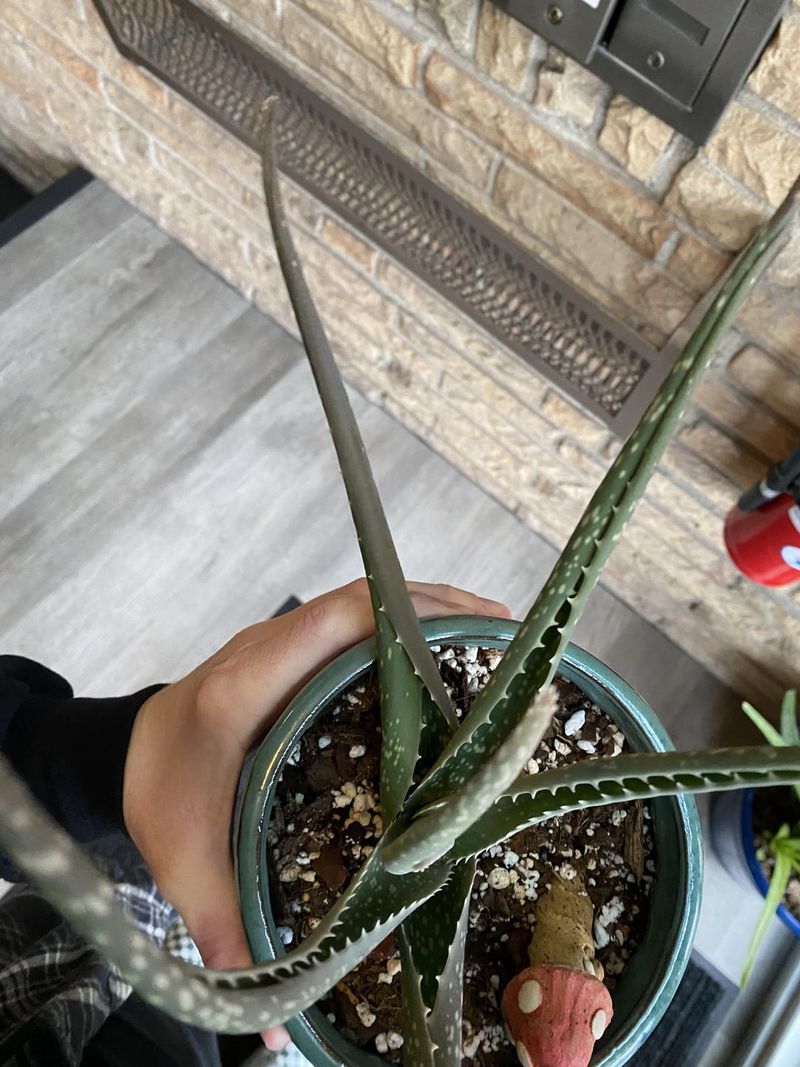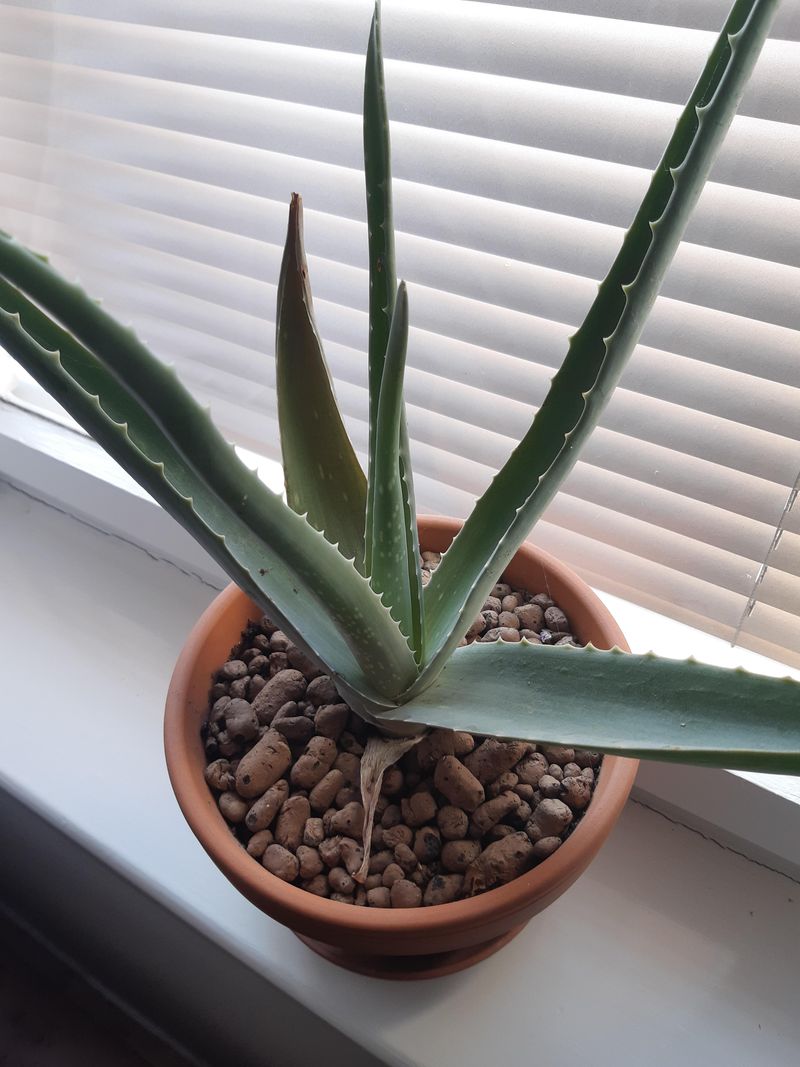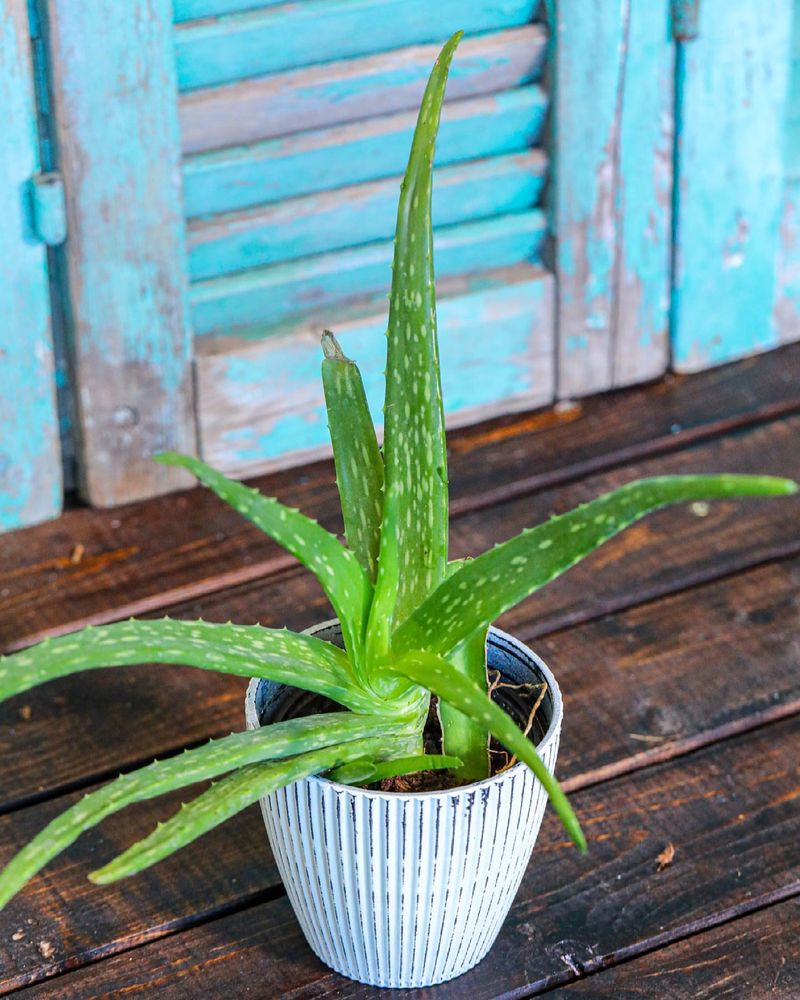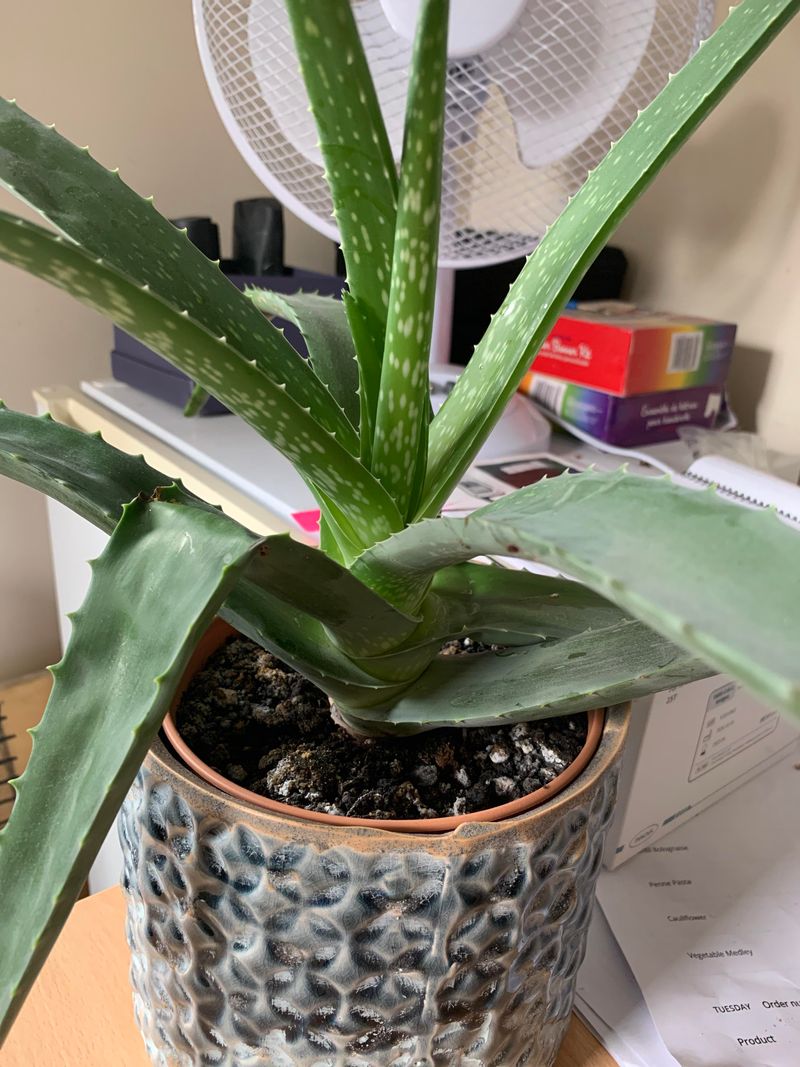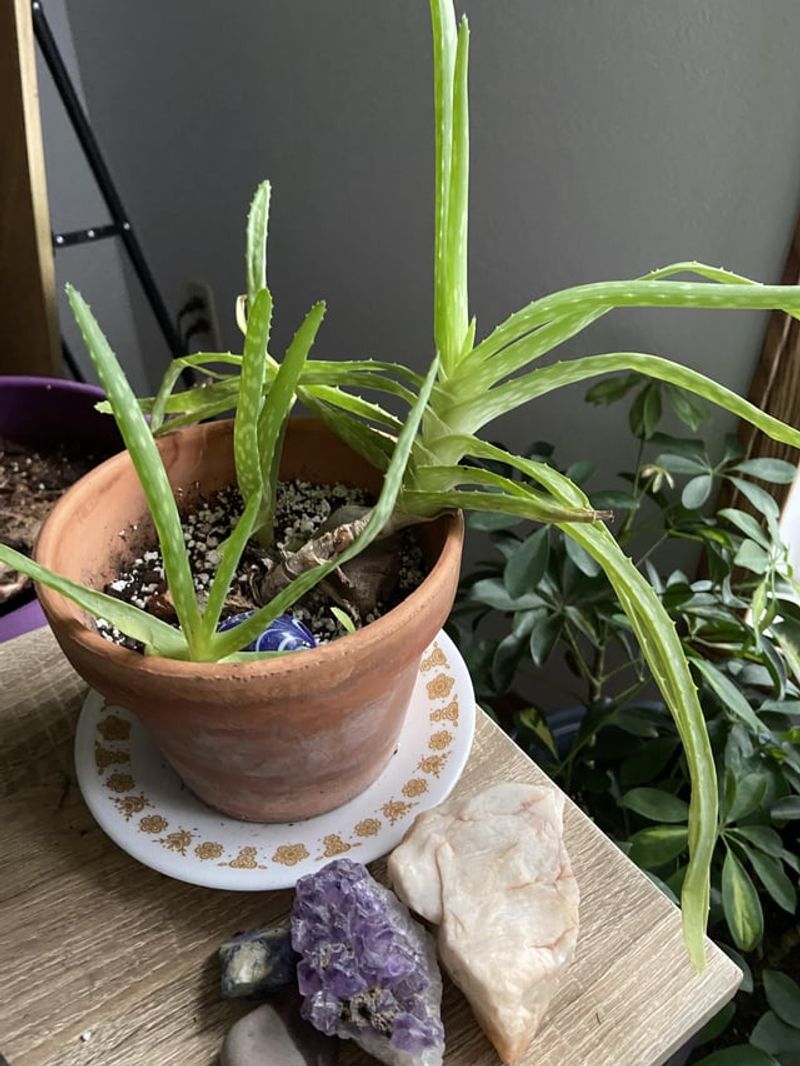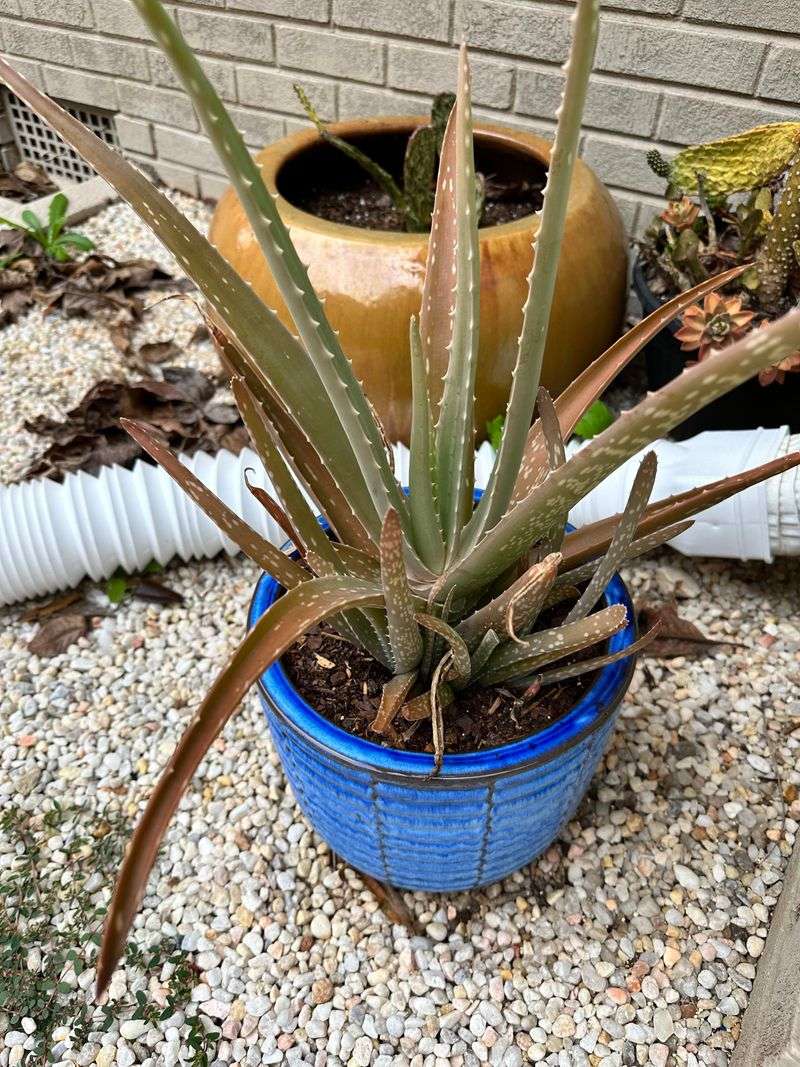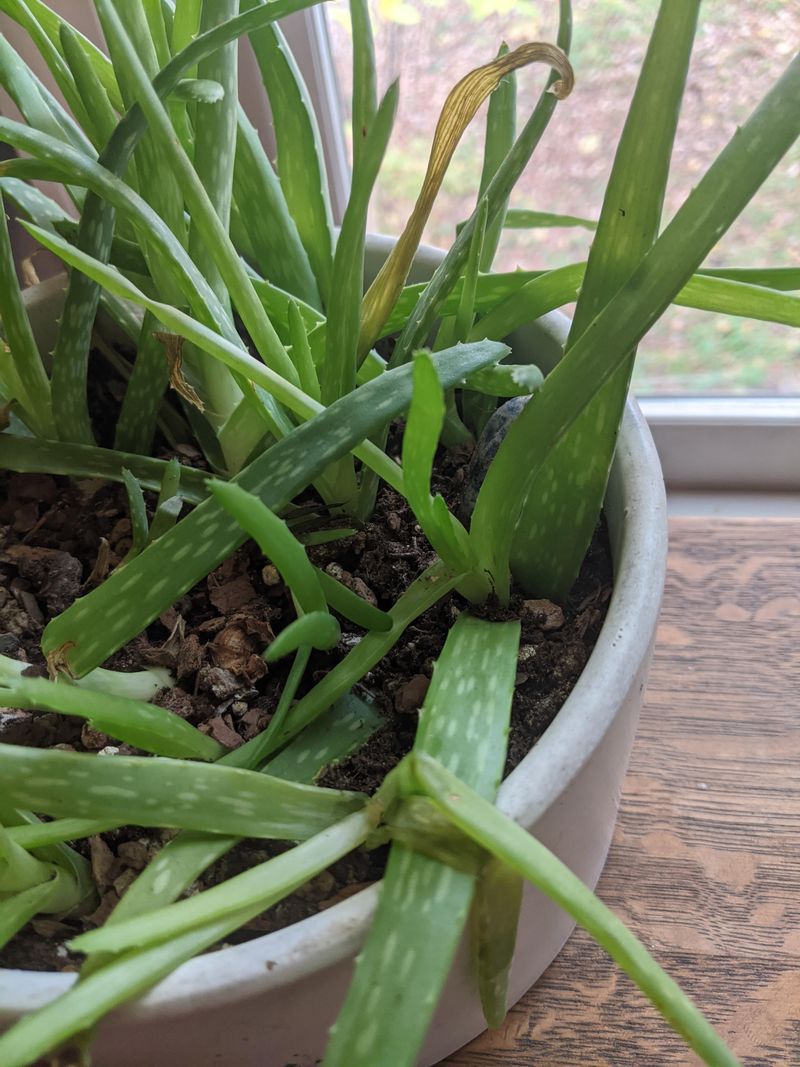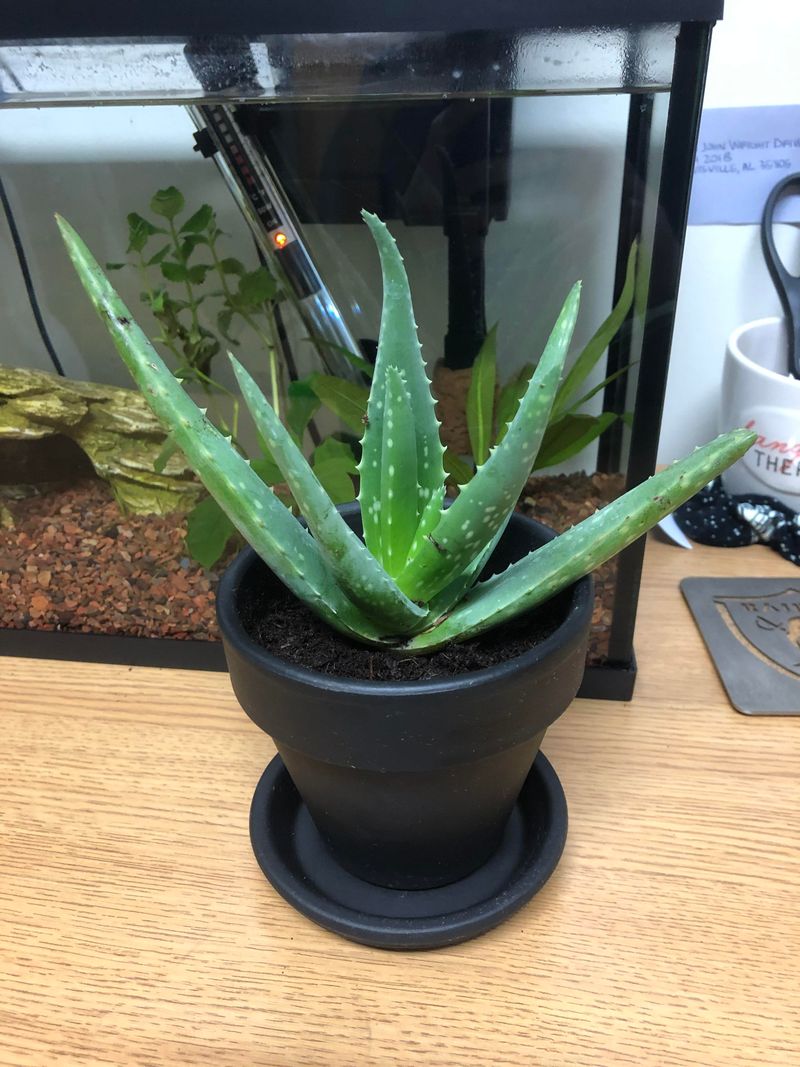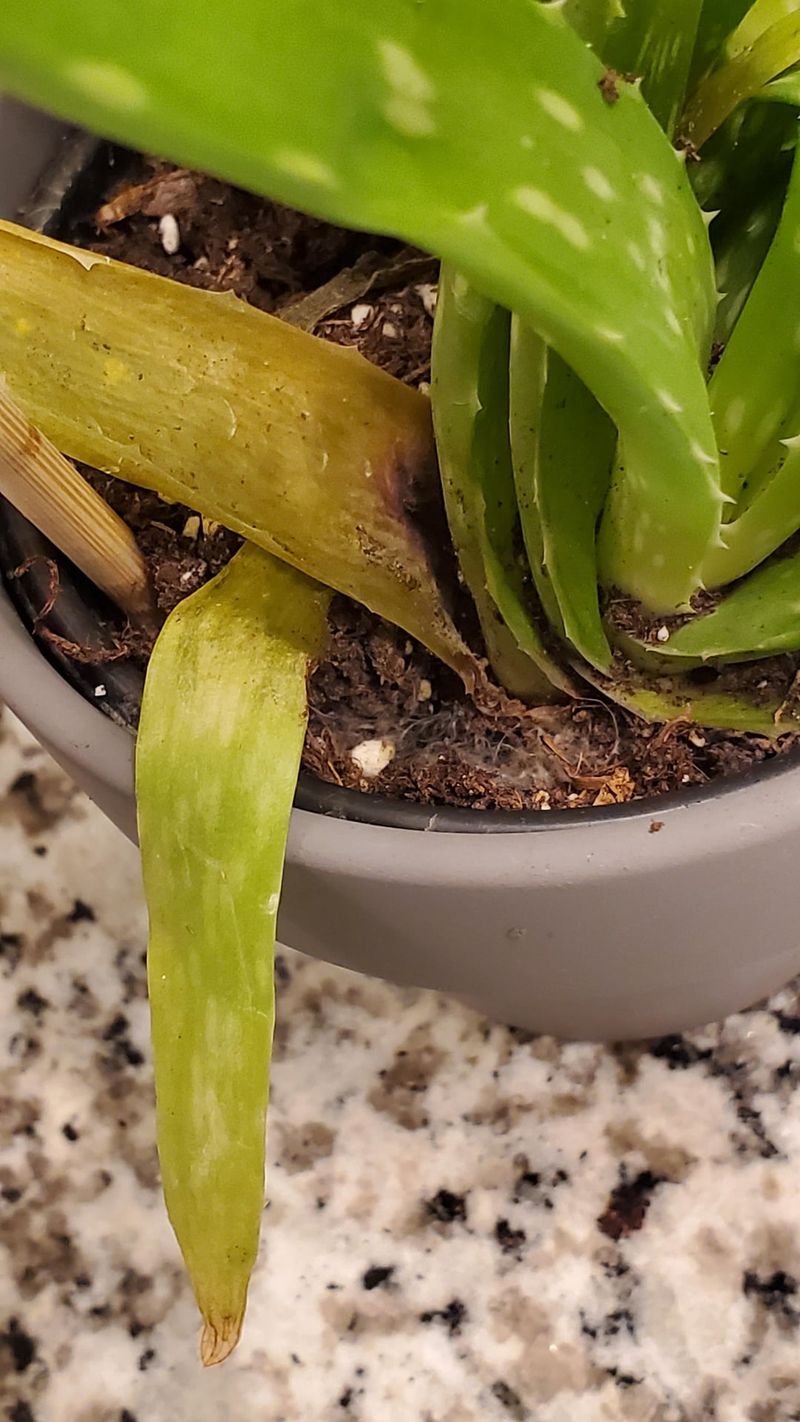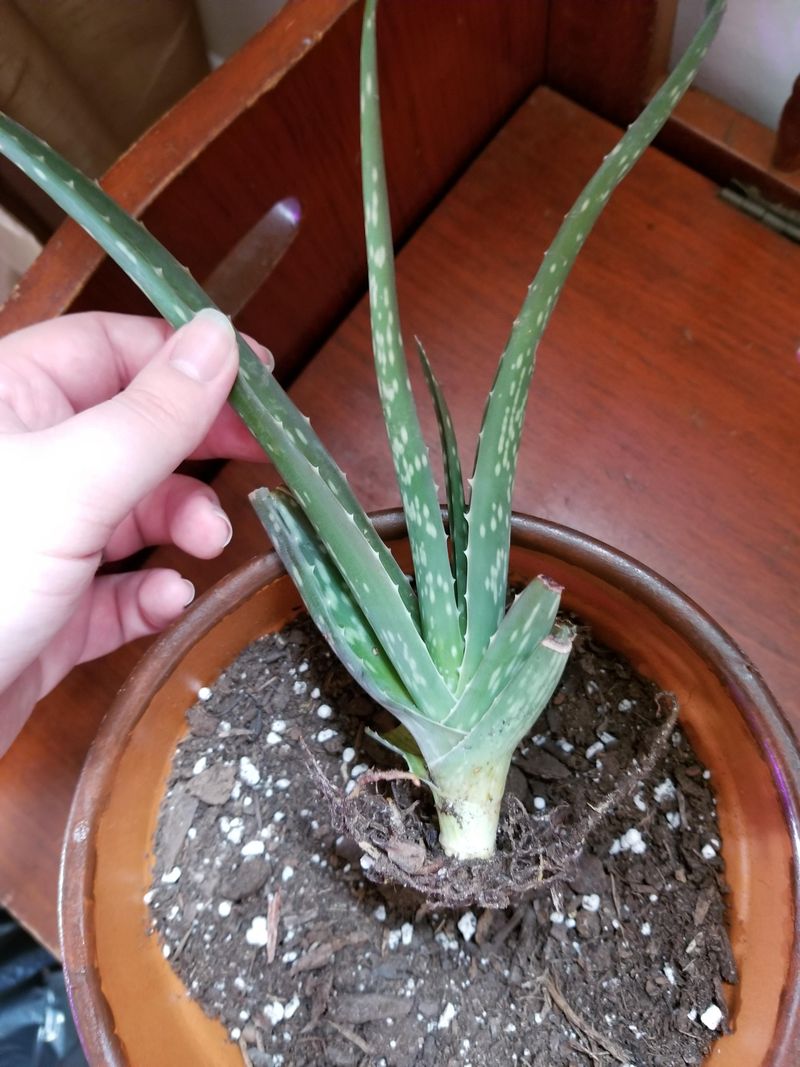Aloe plants might seem tough, but they’ll drop hints when they’re thirsty—and it’s easy to miss them if you’re not paying attention. I used to think they could handle anything, until mine started looking a little sad and wrinkled.
When those leaves get limp or start turning brown at the tips, it’s a clear cry for a drink. Aloe loves a good soak now and then, even if it doesn’t ask loudly.
Catch these signs early, and your plant will stay happy and healthy for way longer.
1. Curling Leaves
Your aloe’s normally plump leaves might start to curl inward when water is scarce. This defensive position helps the plant conserve whatever moisture remains in its tissues. Think of it as your plant hugging itself to hold onto every last drop. If you notice this change in leaf position, it’s time to give your succulent friend a good drink.
2. Brown Leaf Tips
The ends of your aloe leaves turning brown isn’t just a cosmetic issue. This crispy transformation signals that your plant is using up its stored water reserves and beginning to dry out from the extremities. Unlike some browning caused by sunburn, these tips feel dry and brittle to the touch. A thorough watering can prevent this browning from spreading further.
3. Concave Leaves
Healthy aloe leaves should appear full and slightly rounded. When they start developing a concave or dipped appearance, your plant is telling you it’s depleting its internal water storage. Run your finger along the leaf surface – a sunken feel rather than a firm plumpness means it’s time for water. This depression occurs as the plant’s cells lose their turgor pressure.
4. Leaf Folding
Notice your aloe’s once upright leaves now folding downward like they’ve lost their backbone? That’s because they literally have – water pressure helps maintain leaf structure and position. As moisture levels drop, leaves lose their internal support and begin to droop or fold. This folding is different from natural leaf positions and indicates your plant is struggling to stay hydrated.
5. Transparent Leaves
Parts of your aloe leaves turning translucent might seem strange but it’s actually a clear distress signal. The plant is cannibalizing its own tissue, drawing moisture from some areas to keep others alive. These see-through sections feel thin and papery compared to healthy tissue. Quick watering can sometimes save affected leaves, though severely transparent sections may not recover fully.
6. Slow Growth
Has your aloe been looking exactly the same for months? Stunted growth often indicates insufficient water to support new development. Plants conserve energy during drought by pausing growth. While aloes naturally grow slowly, a completely stalled plant might be in water conservation mode. Regular, appropriate watering should restart the growth process and help your plant reach its full potential.
7. Wrinkled Texture
Smooth, firm leaves are a sign of aloe health. When you notice wrinkles developing along the surface, your plant is losing its internal moisture faster than it’s being replaced. Run your fingers along the leaves – those wrinkles feel similar to prune-like skin after too long in water. This texture change is your plant’s equivalent of getting dehydration wrinkles and needs addressing quickly.
8. Pale Coloration
That vibrant green hue fading to a lighter, washed-out shade isn’t just about sunlight exposure. Water-stressed aloe plants often lose their rich color as chlorophyll production decreases during conservation mode. The pale appearance might be uniform or patchy across leaves. Restoring proper watering typically brings back that lush green color as the plant recovers its normal metabolic functions.
9. Brittle Leaves
Normally flexible aloe leaves becoming stiff and brittle signals severe dehydration. The plant’s leaves should have some give when gently squeezed, bending slightly without breaking. When water levels drop critically low, that suppleness disappears. Try this simple test: if the leaf snaps rather than bends when gently folded, your aloe is desperately thirsty and needs immediate attention.
10. Soil Pulling Away
Check the edges of your pot – soil shrinking away from the sides is a reliable indicator your aloe needs water. Dry soil contracts as moisture evaporates, creating visible gaps between the soil mass and container. This separation makes watering less effective as liquid runs down the sides instead of soaking in. When you spot this gap forming, it’s definitely time to give your aloe a thorough, slow watering.

